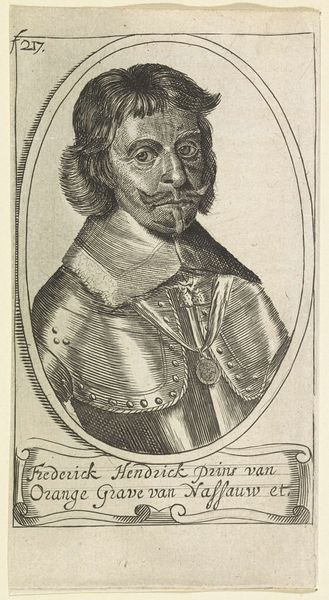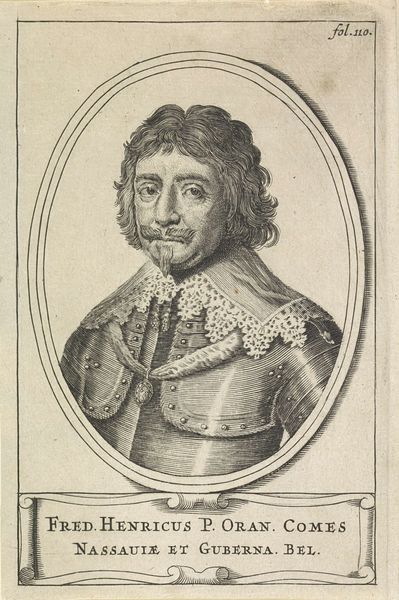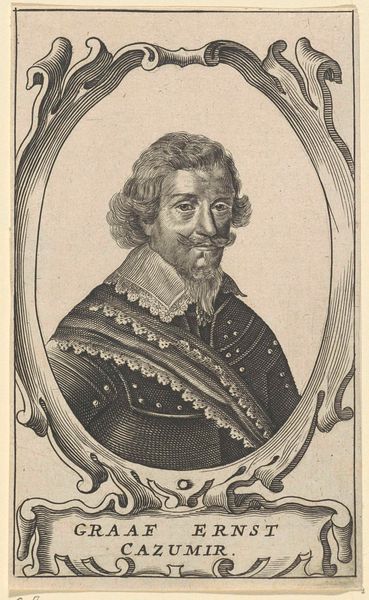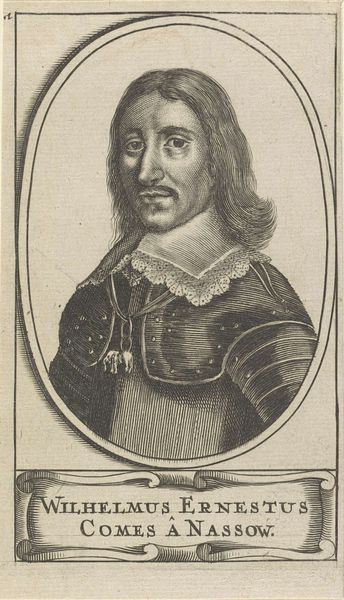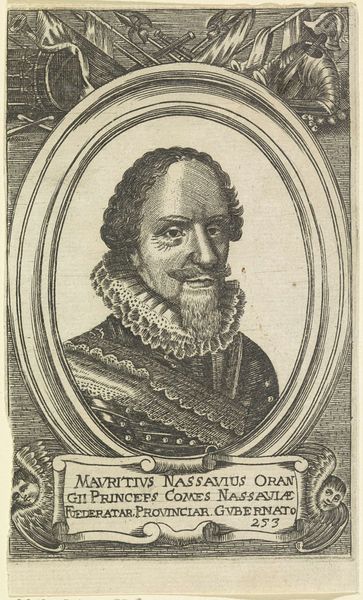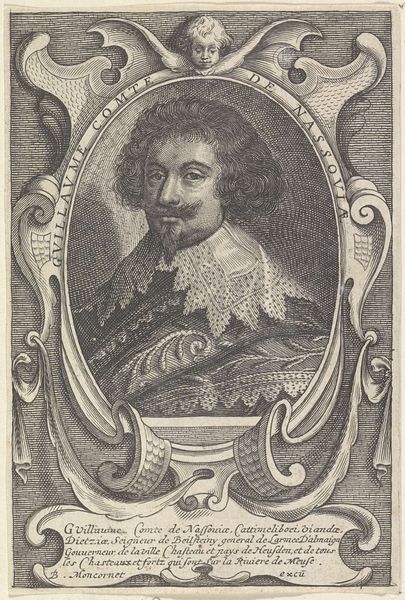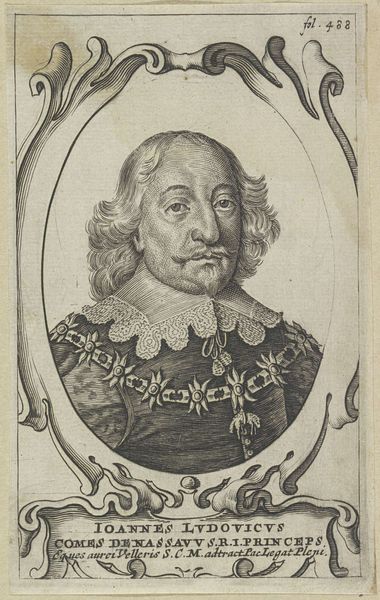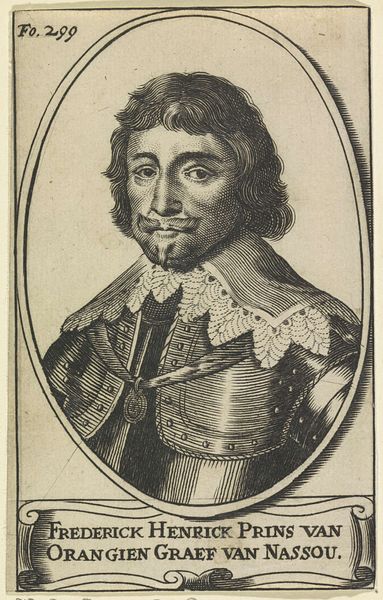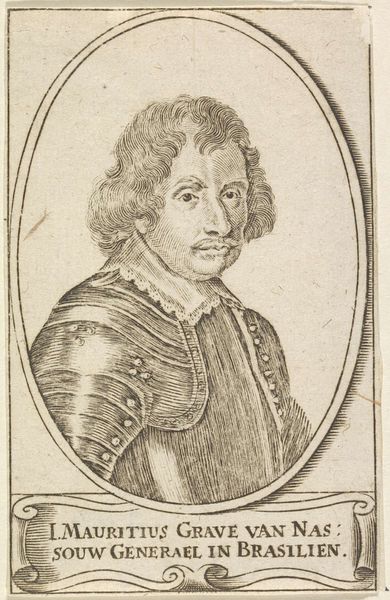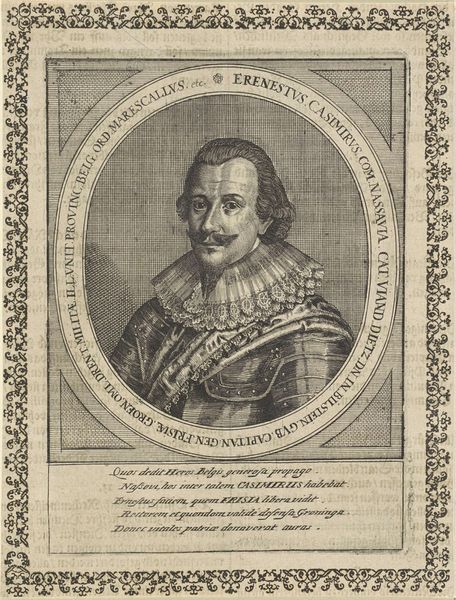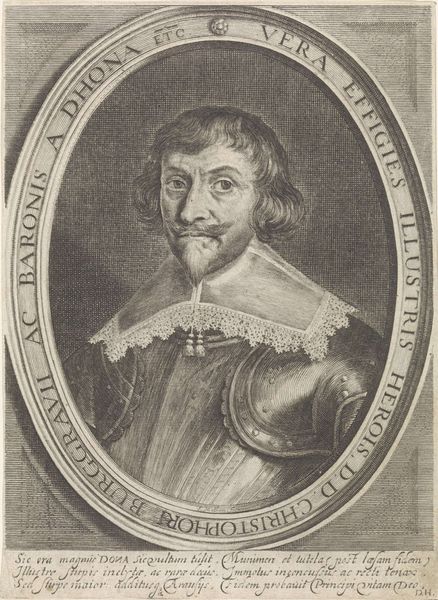
engraving
#
portrait
#
baroque
#
old engraving style
#
figuration
#
19th century
#
line
#
history-painting
#
engraving
Dimensions: height 110 mm, width 68 mm
Copyright: Rijks Museum: Open Domain
This is an engraving of Ernst Casimir, Count of Nassau-Dietz, made by an anonymous artist. Given the sitter's armor and the style of the lettering, this portrait likely dates from the early to mid-17th century in the Netherlands. During this period, the Dutch Republic was emerging as a major power, fueled by maritime trade and a burgeoning artistic culture. The House of Orange-Nassau held significant political and military influence, and portraits like these served as visual reminders of their power. The engraving medium allowed for wide distribution, reinforcing social hierarchies and promoting the image of the ruling class. This print would have circulated amongst elites, reinforcing their status and legitimizing their authority. The Rijksmuseum’s own collection policies contribute to this continued visibility. To fully understand this image, one might consult genealogical records, military histories, and studies of Dutch print culture. This portrait underscores how art is deeply embedded in social and institutional contexts.
Comments
No comments
Be the first to comment and join the conversation on the ultimate creative platform.
